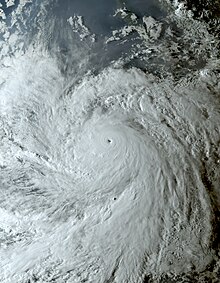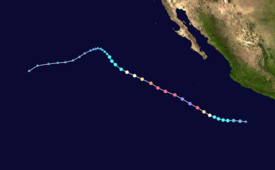D
Deleted member 29029
Silver
- Joined
- Apr 26, 2023
- Posts
- 563
- Reputation
- 220
Just post a real picture if you are good looking why are you so scaredanyway I uploaded my candids on the bot.
Follow along with the video below to see how to install our site as a web app on your home screen.

Note: this_feature_currently_requires_accessing_site_using_safari
Just post a real picture if you are good looking why are you so scaredanyway I uploaded my candids on the bot.
Just post a real picture if you are good looking why are you so scared

That's what I thought boyono thanks.
That's what I thought boyo
bro he ain’t GL, He jerks off to his AI generated Chads and stacies all day and fantasize about being them/with them.Ur GL but a mentalcel, unfortunately.

IL these ai photos he linked me too are photos I've seen on tiktok and are generated it's not himbro he ain’t GL, He jerks off to his AI generated Chads and stacies all day and fantasize about being them/with them.
I asked his pics in Pms and he sent me some Edited AI generated fake photo of some MENA chad.
Told him to send a pic touching his nose if it was real (obviously it wasn’t jfl but he kept saying it was him) and obviously he didn’t.
this nigga is weird af bro, he really goes around faking to be some AI dudeIn motion video with a nametag then.
bro he ain’t GL, He jerks off to his AI generated Chads and stacies all day and fantasize about being them/with them.
I asked his pics in Pms and he sent me some Edited AI generated fake photo of some MENA chad.
Told him to send a pic touching his nose if it was real (obviously it wasn’t jfl but he kept saying it was him) and obviously he didn’t.

IL these ai photos he linked me too are photos I've seen on tiktok and are generated it's not him
this nigga is weird af bro, he really goes around faking to be some AI dude

you ain’t even soft maxed lil nigga and you frauding hard looking at the sun. You ain’t HTNJust posted this 1 asking what type of nose job I need so I can ascend to high htnView attachment 2526410
this nigga is weird af bro, he really goes around faking to be some AI dude
anyway I uploaded candids from different angles onto the chatbotIL these ai photos he linked me too are photos I've seen on tiktok and are generated it's not him
I said I need a nose job to get htn budyou ain’t even soft maxed lil nigga and you frauding hard looking at the sun. You ain’t HTN
No please don’t jerk off to my avi too since he’s some AI Morphed dude!!

you said High HTN go read againI said I need a nose job to get htn bud
Yea someone literally said once I get nose job I'm high htn and low chadlite rangeyou said High HTN go read again
you said High HTN go read again

YMajestic incel
cuRYING ON DA TELEPHONE

I stuffed my PSL 5.5 face in Jova's hurricussy



Let me tell you in dmsmind sharing the prompt?
i tried myself and it doesn't work.
i have gpt 4
ITS SO
ITS SO
JOVA
| Meteorological history | |
|---|---|
| Category 5 hurricane | |
| Overall effects | |
 Jova nearing its peak intensity on September 7 | |
| Formed | September 4, 2023 |
| Remnant low | September 10, 2023 |
| Dissipated | September 12, 2023 |
| 1-minute sustained (SSHWS/NWS) | |
| Highest winds | 160 mph (260 km/h) |
| Lowest pressure | 929 mbar (hPa); 27.43 inHg |
| Fatalities | None reported |
| Areas affected | Western Mexico, Baja California peninsula, Southwestern United States |
Part of the 2023 Pacific hurricane season |
 Map plotting the storm's track and intensity, according to the Saffir–Simpson scale
Map plotting the storm's track and intensity, according to the Saffir–Simpson scale Hurricane Jova rapidly intensifying over the course of the day on September 6
Hurricane Jova rapidly intensifying over the course of the day on September 6
 Some moisture from Tropical Cyclone #Jova continues to stream in over SoCal with a bit of rain on the way! In some cases, you may see "rain" on radar at your given spot, but it's not actually raining. Why? Issuing a #NerdAlert
Some moisture from Tropical Cyclone #Jova continues to stream in over SoCal with a bit of rain on the way! In some cases, you may see "rain" on radar at your given spot, but it's not actually raining. Why? Issuing a #NerdAlert  for a lil science lesson below... #CAwx (1/4)" (Tweet). Retrieved September 11, 2023 – via Twitter.
for a lil science lesson below... #CAwx (1/4)" (Tweet). Retrieved September 11, 2023 – via Twitter.
| show Tropical cyclones of the 2023 Pacific hurricane season |
|---|
 Infrared satellite loop of Hurricane Jova in September 2023, as it underwent rapid intensification
Infrared satellite loop of Hurricane Jova in September 2023, as it underwent rapid intensificationI'll tell you in dms.Send the prompt/text you used for it to give you these results.
i asked gpt to summarize this thread an it said:
cope till rope

it didn't.i asked gpt to summarize this thread an it said:
cope till rope
omg look at me I have forward growthPosts101,705Reputation86,672